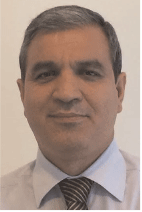Shale gas resource assessment in the Merlinleigh Sub-basin, Carnarvon Basin
Joanna Wong A and Mohammad Bahar ADepartment of Mines and Petroleum, Government of Western Australia.
The APPEA Journal 55(2) 452-452 https://doi.org/10.1071/AJ14087
Published: 2015
Abstract
The recent shale gas developments in the US have encouraged exploration for shale gas resource in WA. In the largely unexplored Carnarvon Basin, the Merlinleigh Sub-basin is predominately of Permian strata and has been shown to contain high-quality gas-prone source rocks from geochemical data.
Three main potential shale layers, the Gneudna Formation, Wooramel Group and the Byro Group, were identified based on the shale ranking parameters. Geochemical data was collected and analysed for the type of kerogen, total organic content (TOC), generation potential and thermal maturity.
These parameters enabled a gas-in-place resource estimation to be made for each of the formations. The TOC data from various wells were validated by using petrophysical logs and the ΔlogR method. In comparison with the geochemical data, both values produced a good match, validating both sets of data.
The three layers were ranked according to their geochemical parameters and any petrophysical or geomechanical characteristics. It was identified that the Wooramel Group contains the best quality source rocks, followed by the Byro Group. The Gneudna Formation was found to have poor quality source rocks.
The Monte Carlo method by Crystal Ball was selected to estimate the probabilistic resources of these three layers. According to the P50 estimations, the Byro Group, Wooramel Group and the Gneudna Formation contained resources of 51.6 tcf, 40.1 tcf and 1.4 tcf, respectively.

Joanna Wong graduated from Curtin University in 2013 with a Bachelor of Petroleum Engineering and completed her internship at Santos Brisbane, where she worked with a multidisciplinary team on improving the production and well integrity of CSG wells. Leading on from her unconventional work experience, Joanna’s thesis focused on the correlation between the severity and extent of skin damage around CSG wellbores. Joanna has been employed by the Department of Mines and Petroleum since January 2014 under the graduate program as a graduate officer of petroleum safety and has undergone rotations in petroleum safety, petroleum division, Apache Energy (external-facilities engineering), environment division and the investigations branch. Member: SPE. |

Mohammad Bahar has more than 25 years’ experience in the oil and gas industry and is the author of more than 28 peer-reviewed scientific publications and conference papers. He has a BSc and an MSc in chemical engineering from the Petroleum University of Technology, Iran, and a PhD in petroleum engineering from Curtin University of Technology. He has professional experience with fluid phase behaviour, enhanced oil recovery, reservoir simulation and field development planning. He started his career with National Iranian Oil Company from 1990 to 2003. After completing his PhD, he joined CSIRO as a research scientist in 2006, where he worked on a microbial-enhanced oil recovery project. In 2010, he joined the Department of Mines and Petroleum, where he is a senior reservoir engineer on unconventional resources, CO2 storage and reservoir management projects. |
References
Ghori, K.A.R., 1996—Petroleum Source Rocks Merlinleigh and Byro Sub-basins, Carnarvon Basin, Western Australia. Geological Survey of Western Australia Record 1995/5. Perth: Geological Survey of Western Australia, 108.Ghori, K.A.R. (2013). Emerging unconventional shale plays in Western Australia. APPEA Journal 53, 313–36.
Ghori, K.A.R., Mory, A.J., and Iasky, R.P. (2005). Modelling petroleum generation in the Paleozoic of the Carnarvon Basin Western Australia: Implications for prospectivity. AAPG Bulletin 89, 27–40.
Mccarthy, K., Rojas, K., Niemann, M., Palmowski, D., Peters, K., and Stankiewicz, A. (2011). Basic petroleum geochemistry for source rock evaluation. Oilfield Review 23, 32–43.
Passey, QR., Creaney, S., Kulla, J.B., Moretti, F.J., and Stroud, J.D. (1990). A practical model for organic richness from porosity and resistivity logs. The American Association of Petroleum Geologists Bulletin 72, 1,777–94.


